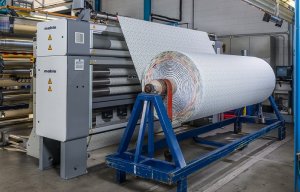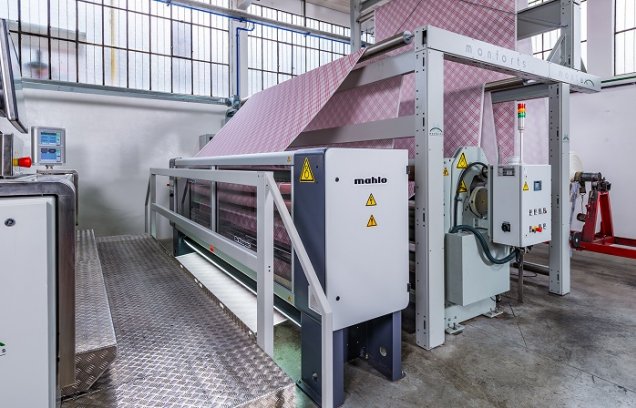
Mahlo technology for Uzbekistan
German market leader Mahlo will be presenting its latest developments in the field of straightening and controlling at ITMA Asia.

8th October 2018
Innovation in Textiles
|
Saal
German market leader Mahlo will be presenting its latest developments in the field of straightening and controlling at ITMA Asia, Asia’s most important textile machinery trade fair that opens its doors in Shanghai next week.
The automatic straightening technology is Mahlo's flagship in the textile sector; the principle of detecting and automatically correcting distortions in the fabric by means of scanning originates from the German think tank and it is still the basis of all modern automatic straightening systems today, the company says.

“With our Generation 15 machines, we have paired over 70 years of experience with state-of-the-art technology and again set standards in textile production and finishing,” commented Sales Manager Thomas Höpfl. Together with the Mahlo sales team and the experienced sales representative Shanghai Kuantex, he will be presenting a continuous transport model with an Orthopac RVMC-15 combination straightener at the ITMA Asia.
Optoelectronic scanning for distortion detection using an oscillating lens and DSP (digital signal processor) is probably the most sensitive and versatile system on the market, according to the manufacturer. Arranged on a carrier bridge, several of these sensors – evenly distributed across the width – simultaneously detect the position of the weft thread at different points. The scanning system detects and analyses the angle position of the weft threads, courses or rows of tufting. An intelligent control algorithm with a self-optimisation function, together with the hydraulic or electric roller positioning adapted to it, ensures that all web distortions are reliably removed.
Even the most complicated product structures pose no problem, the company adds. Scanning systems for special product structures are available as an alternative to standard scanning. Scanning and distortion correction of patterned products (lace, jacquard, print, terry cloth) is possible as well.
The expert audience at ITMA Asia will also be able to learn about a new method for the online control of the number of weft threads/course count, which can also be used to determine and even out the basis weight. The Famacont PMC-15 measures the thread or knit density by means of a sensor and compares it with the nominal value stored in the recipe data management.

The detected deviation of the thread density from the nominal value is used to fully automatically regulate the over-feed during the pinning process on the tenter. The so-called feed-forward control is designed to ensure a constant thread/course density and a uniform basis weight. This factor is particularly important for knitwear manufacturers since their product is sold by weight and must meet customer specifications exactly, the manufacturer explains.
With its new Generation 15 machines, Mahlo is also responding to customers’ demand for increased connectivity in their machines. Mahlo straighteners, sensors and control loops are just a mouse click away from the individual data of existing machines. “If customers use suitable sensor technology and the appropriate networking, they can access the machine from anywhere, provided that an Internet connection is available. Customers also have the option of connecting any machine to the network via an OPC UA server with suitable connectivity,” explained Höpfl.
The Generation 15 machine features cross-platform visualisation. The user interface can be adapted to the individual requirements of the operating personnel with just a few clicks. A large number of operating pages can be individually defined and provide the operating personnel with a complete overview of all the process parameters without having to constantly scroll through the menus. Visualisation can also be used as an information centre to visualise and monitor several Mahlo devices. The data generated is stored in databases and can be summarised in adapted protocols and output via suitable interfaces.

Business intelligence for the fibre, textiles and apparel industries: technologies, innovations, markets, investments, trade policy, sourcing, strategy...
Find out more